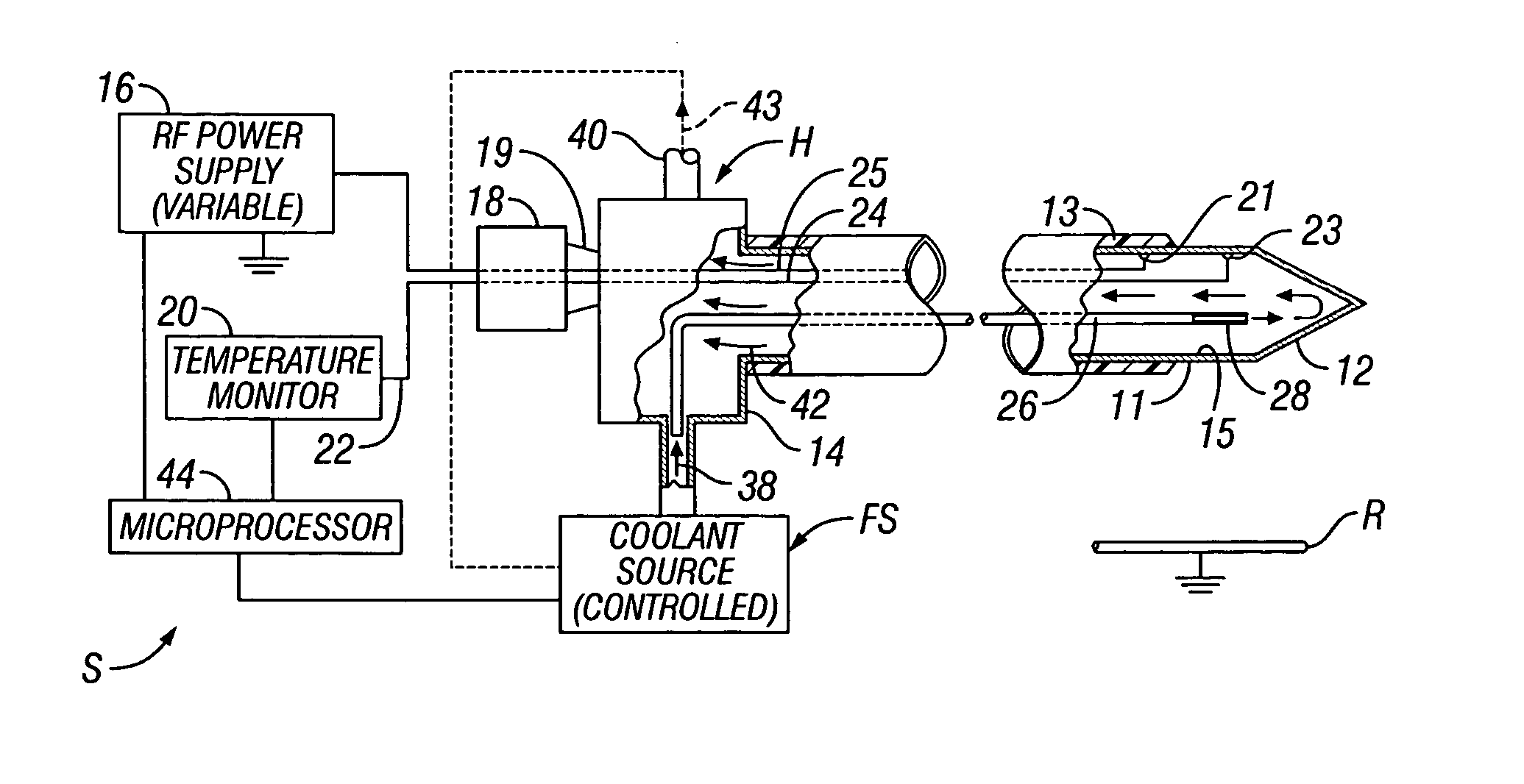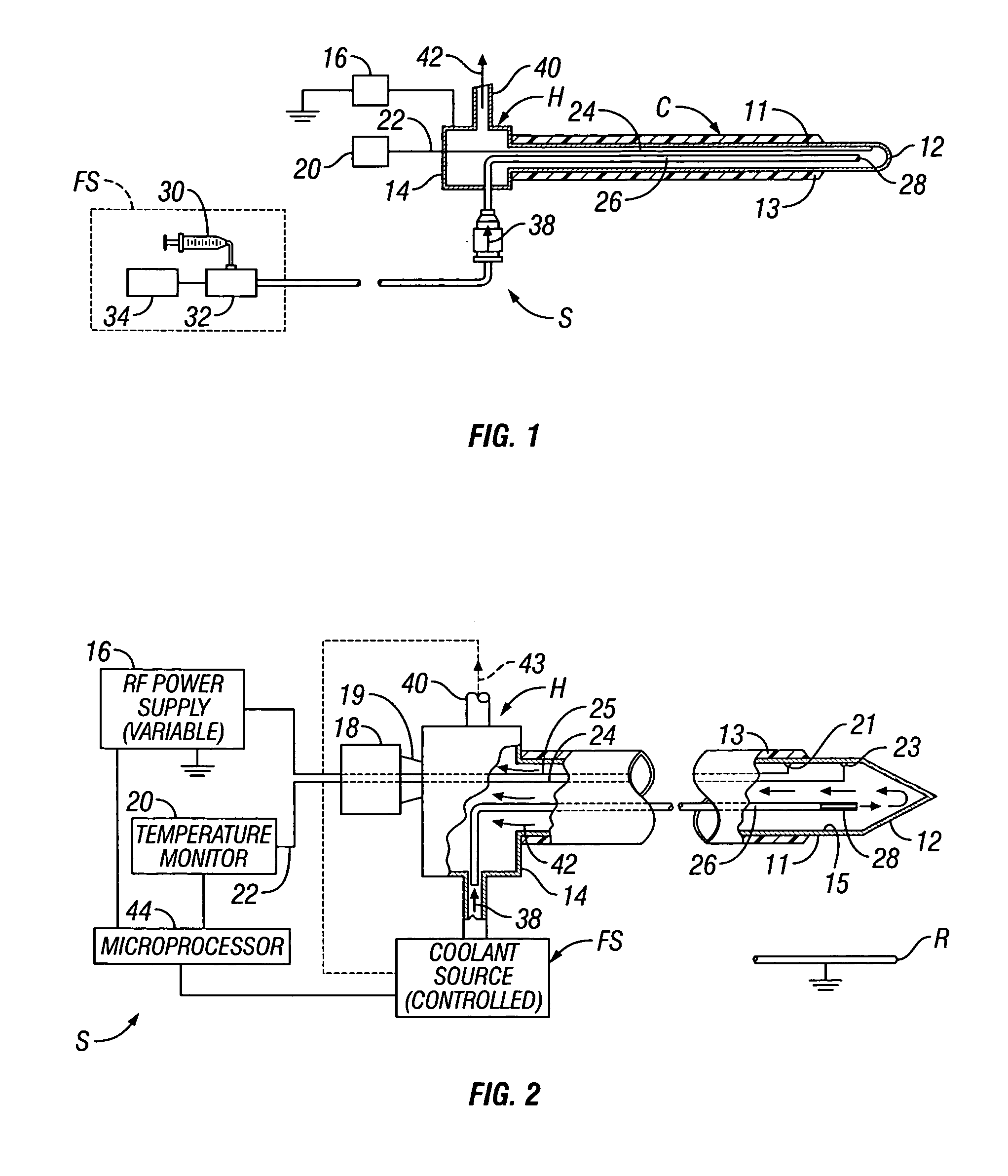Apparatus and method for electrode thermosurgery
a technology of electrode thermosurgery and apparatus, applied in the field of electrosurgical system and method, can solve the problems of reducing affecting the efficiency of electrosurgical procedures, so as to achieve the effect of maximizing the formation of lesion
- Summary
- Abstract
- Description
- Claims
- Application Information
AI Technical Summary
Benefits of technology
Problems solved by technology
Method used
Image
Examples
Embodiment Construction
[0024] Particular embodiments of the present disclosure are described hereinbelow with reference to the accompanying drawings. In the following description, well-known functions or constructions are not described in detail to avoid obscuring the present disclosure in unnecessary detail. Those skilled in the art will understand that the invention according to the present disclosure may be adapted for use with either monopolar or bipolar electrosurgical systems.
[0025] Referring concurrently to FIGS. 1 and 2, the illustrated ablation system generally incorporates an elongated shaft or cannula body C for insertion, either percutaneously or intraoperatively into an open wound site. As illustrated, the cannula body C is integral with a head or hub element H coupled to remote support components, collectively designated S.
[0026] Structurally, cannula body C incorporates an elongated ablative electrode 11 (FIG. 2) formed of conductive material, e.g. metal such as stainless steel, titanium,...
PUM
 Login to View More
Login to View More Abstract
Description
Claims
Application Information
 Login to View More
Login to View More - R&D
- Intellectual Property
- Life Sciences
- Materials
- Tech Scout
- Unparalleled Data Quality
- Higher Quality Content
- 60% Fewer Hallucinations
Browse by: Latest US Patents, China's latest patents, Technical Efficacy Thesaurus, Application Domain, Technology Topic, Popular Technical Reports.
© 2025 PatSnap. All rights reserved.Legal|Privacy policy|Modern Slavery Act Transparency Statement|Sitemap|About US| Contact US: help@patsnap.com



